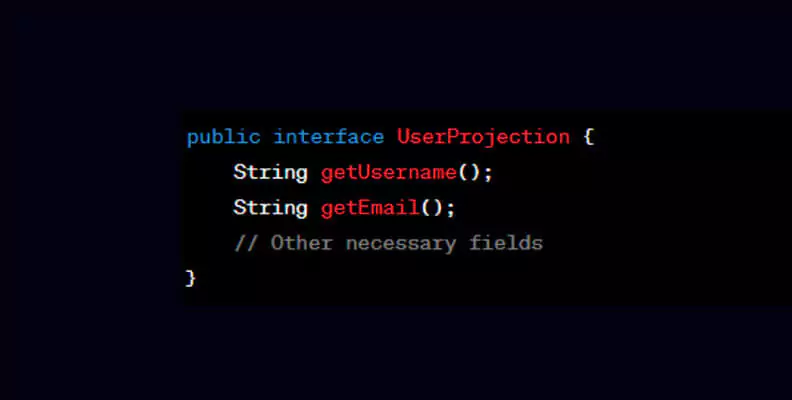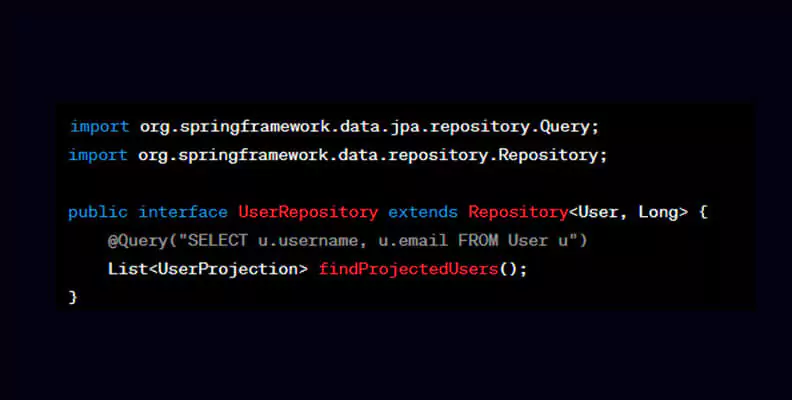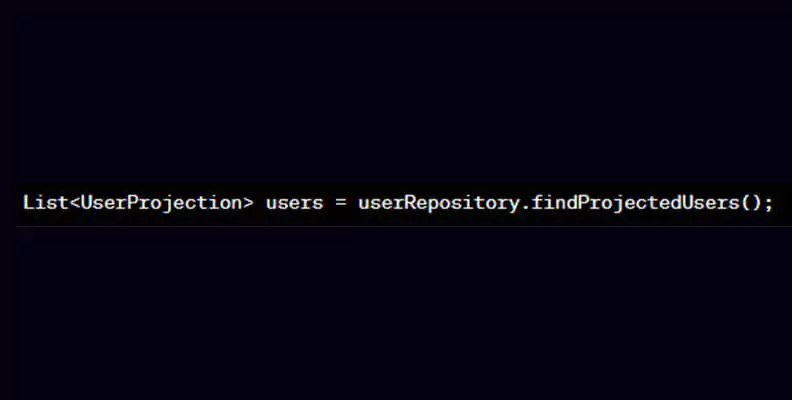Loading.....
Mastering Database Efficiency with JPA Projection in Spring Boot

JPA Projection revolutionizes data retrieval in Spring Boot applications, offering a tailored approach to fetch only essential entity fields from databases. In contrast to fetching entire entities, developers can define custom interfaces, specifying a subset of fields, thus reducing overhead and optimizing performance. The relevance of JPA Projection becomes apparent in complex systems where entities harbor numerous attributes, and not all are needed at all times. This blog delves into the comprehensive process of implementing JPA Projection in Spring Boot, uncovering its benefits, practical usage, and advanced strategies. Join us as we explore how JPA Projection empowers developers to fine-tune data retrieval, enhancing the efficiency of Spring Boot applications.
Exploring JPA Projection
JPA Projection offers a selective retrieval mechanism that allows developers to define custom interfaces specifying a subset of entity fields to be retrieved from the database. Instead of fetching entire entities, it enables the selection of only necessary fields, reducing overhead and facilitating faster data access.
Why JPA Projection Matters in Spring Boot
In complex systems, data entities often contain numerous attributes. Consider an entity like User, which might have fields such as username, email, date of birth, address, and more. However, not all these fields might be needed at all times. Fetching only the required subset of fields, such as username and email, can significantly boost application performance.
Let's explore the comprehensive process of employing JPA Projection in a Spring Boot application and how it can be effectively utilized.
Benefits of JPA Projection
Here are some advantages that JPA Projection offers in a Spring Boot application:
1. Performance Optimization
JPA Projection significantly optimizes performance by fetching only the required fields. When dealing with large datasets or complex entities, fetching the entire object might lead to unnecessary data transfer and increased processing time. Selecting only the necessary fields considerably reduces this overhead, resulting in improved performance.
2. Reduced Network Traffic
With fewer fields to retrieve, the amount of data transferred over the network diminishes. This reduction in network traffic not only enhances the application's performance but also minimizes the load on the network infrastructure, particularly in cases where applications communicate across servers or cloud services.
3. Simplified Queries
JPA Projection allows for more straightforward and efficient queries. By specifying the necessary fields in the projection interface, developers can construct queries that target only these fields, simplifying the data retrieval process and making the code more readable and maintainable.
4. Enhanced Security
JPA Projection contributes to improved security by limiting the exposure of sensitive information. When employing projection, developers can explicitly choose which fields to include in the result set, ensuring that confidential or unnecessary data is not inadvertently exposed. This adds an additional layer of security, particularly when dealing with applications that handle sensitive user or business-related data.
5. Easier Versioning and Upgrades
Utilizing JPA Projection facilitates easier versioning and upgrades in a Spring Boot application. As business requirements evolve, fields in entities may change. With projection, developers can seamlessly adapt to these changes by updating the projection interface to include the new fields or modifications. This flexibility simplifies the process of accommodating updates without significant disruptions, making it more straightforward to maintain and evolve the application over time.
Implementing JPA Projection
1. Define a Projection Interface
Start by creating a projection interface that outlines the specific fields to be retrieved:

2. Adapt the Repository Interface
Modify the repository interface to accommodate the new projection:

3. Utilize the Projection in Code
Implement the projection by calling the repository method:

Advanced Usage and Strategies
Beyond basic usage, developers can further optimize their approach to JPA Projection:
Nested Projections
JPA Projection supports nested projections, enabling the extraction of fields from related entities or complex object graphs. This allows for a more comprehensive and customized selection of data.
Dynamic Projections
Spring Data JPA supports dynamic projections that allow developers to define projections at runtime. This flexibility can be particularly useful when the required fields vary based on specific conditions or user preferences.
Custom Repository Methods
Developers can create custom repository methods and extend the functionality by defining specific projections, allowing for tailored and more efficient queries. JPA Projection in Spring Boot empowers developers to fine-tune their data retrieval process by fetching only the necessary fields from entities. This approach significantly improves application performance by reducing data transfer, optimizing query execution, and simplifying code implementation.
In your Spring Boot applications, considering JPA Projection offers a strategic advantage in streamlining database queries, enhancing performance, and delivering a more responsive and efficient application.
By utilizing JPA Projection effectively, developers can optimize their applications, ensuring a more seamless and performant user experience.
Conclusion
In conclusion, JPA Projection in a Spring Boot application emerges as a powerful solution for optimizing data retrieval and enhancing overall performance. Efficiently streamlining database queries, this approach enables developers to selectively fetch essential fields, reducing unnecessary data transfer and boosting application responsiveness. Advanced strategies, such as nested and dynamic projections, further enhance the customization and flexibility of this technique. In the dynamic landscape of Spring Boot development, JPA Projection proves to be a strategic asset for developers aiming to achieve optimal efficiency in their applications.
 Back to blog
Back to blog












